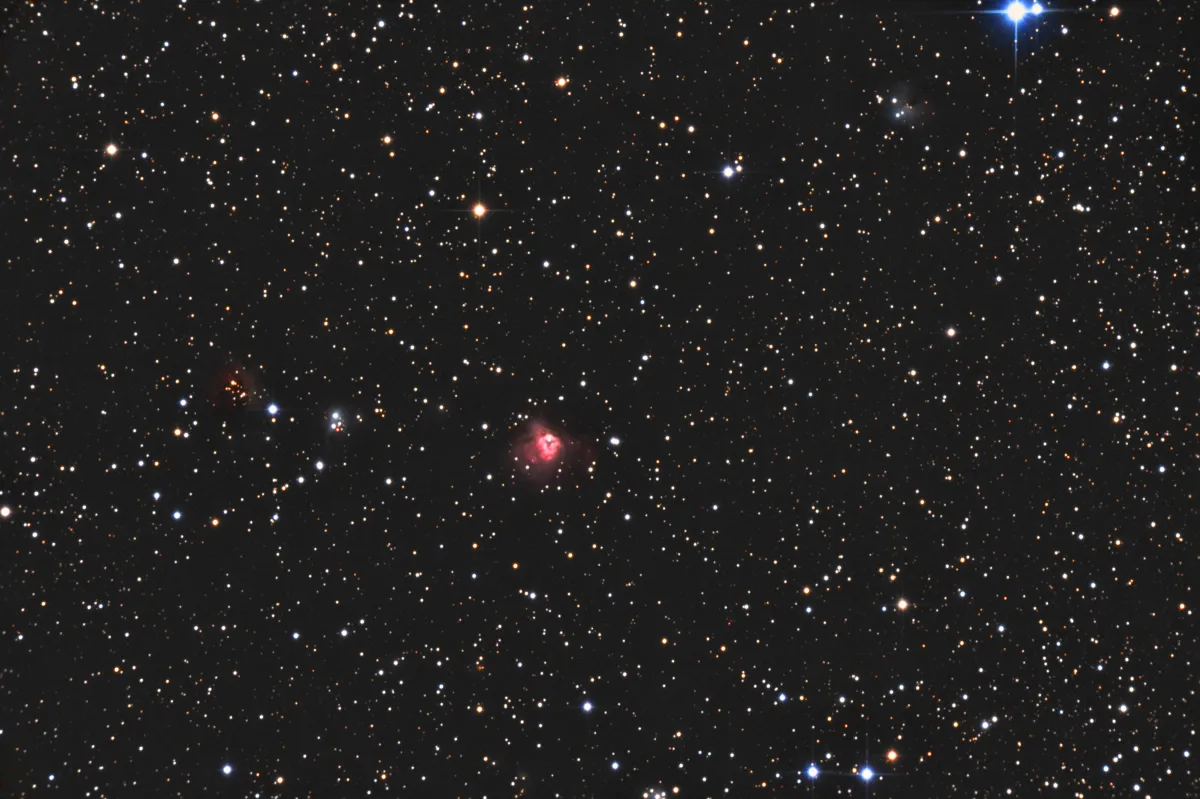Galactic Nebula IC 1470

Object Description
IC 1470 was discovered almost simultaneously and independently by three different astronomers: On 20 March 1892 by the Austrian Rudolf Ferdinand Spitaler and the following night by the Dane Carl Frederick Pechüle and the American Edward Emerson Barnard. [196] John L. E. Dreyer describes the object in his first «Index Catalogue» published in 1895 as follows: «very weak, very small, stellar core on the northern edge». [314] The compact H-II region is located in the Perseus arm of the Milky Way. Inside is the small star cluster [BDS2003] 39. The nebula is excited to shine by an O8 V star. The age is estimated to be one to three million years [362] The measured distances range from 2.68 kpc to 5.3 kpc (8740 to 17,300 light years). [145]
Further east of IC 1470 one comes across three other small star clusters: NGC 7510 was discovered by William Herschel on 3 November 1787. The distance to Earth is 2075 parsecs and the age is estimated to be 38 million years. King 19 is located in 1967 pc and has an estimated age of 360 million years. Kronberger 23 is home to the variable star QT Cephei). [138, 145]
| Name | RA | Dec | Type | vMag | Dim | MD | Dreyer Description | Identification, Remarks |
|---|---|---|---|---|---|---|---|---|
| NGC 7510 | 23 11 04.2 | +60 34 08 | OCL (II2m) | 7.9 | 7 | 2.075 | Cl, pRi, pC, fan-sh, st pB | WH VII 44; h 2213; GC 4902; OCL 256 |
| IC 1470 | 23 05 10.4 | +60 14 32 | EN | 1 × 1 | 3.700 | vF, vS, stellar N north edge | CED 208; Sh2-156 |
Finder Chart
The galactic nebula IC 1470 is located in the constellation Cepheus, which is best visible from May to February.
